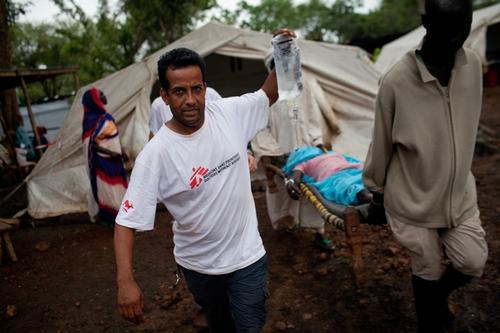The Rohingya crisis: Five years on, through the eyes of our patients
To mark five years of the Rohingya crisis, Médecins Sans Frontières / Doctors Without Borders (MSF) is sharing the stories of five refugees to understand how they see their lives today. Watch the video above.
What is the Rohingya crisis?
On 25 August 2017, a horrific series of events began in Rakhine State, Myanmar.
That day, the military launched a brutal crackdown on the country’s long-persecuted Rohingya minority.
Thousands of people were killed – MSF alone documented 6,700 violent deaths – while more than 700,000 others fled for their lives across the nearby border with Bangladesh.
Smaller numbers made it to countries such as Malaysia, Thailand and Indonesia.
What is the situation now?
The people who escaped to Bangladesh joined other Rohingya who were already seeking safety from previous waves of violence.
Today, they make up a population of almost one million refugees living in the area of Cox’s Bazar. This includes the Kutupalong-Balukhali ‘mega camp’ – the largest refugee settlement on Earth.

Help us prepare for the next emergency
Now, in August 2022, the need for better health, water, sanitation and protection for the huge numbers of people living in the camps is immense. Meanwhile, those who fled further to other countries in the region often live on the margins of society.
Throughout this, the Rohingya remain stateless, with little hope of a safe and dignified return home.
What is MSF doing?
Following the massive influx of refugees in August 2017, MSF launched a large-scale emergency response at Bangladesh's border with Myanmar. Our hospital at Kutupalong had already been established in 2009 to treat existing refugees in the area.
In the first six months of the crisis, our teams treated more than 350,000 patients. As of July 2022, we have held more than 2.8 million consultations in our emergency rooms, outpatient departments and mobile clinics.
Currently, MSF runs 10 healthcare facilities with almost 2,000 staff – the majority Bangladeshi nationals – in the Cox’s Bazar district, delivering basic and specialist medical care to meet the vast needs of our patients.
The main health issues we are seeing are respiratory infections, water-borne diseases and skin diseases – all related to poor living conditions – as well as chronic illnesses like diabetes and high blood pressure. We are also providing critically-needed maternity services and mental health care, including for survivors of sexual and gender-based violence.
Can I donate to support MSF's work with Rohingya refugees?
Thanks to the generosity of people like you donating to our general funds, we don't need to launch an appeal for our work in Bangladesh.
Please consider giving an unrestricted donation, which will give our medical teams across the world the valuable flexibility to respond as needs arise.
Visit the following page to learn more.
Please visit the following link should you wish to donate to our general funds.